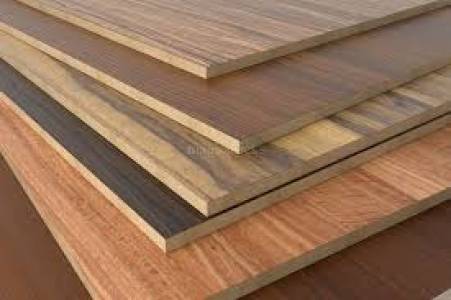Description
Laminated Plywood: Strength, Durability, and Versatility for Your Projects
Laminated plywood, also known as glued laminated timber (glulam) or laminated veneer lumber (LVL), represents a superior alternative to solid lumber for a wide range of applications. This engineered wood product boasts exceptional strength, stability, and consistency, making it ideal for projects demanding high performance and lasting durability.
What is Laminated Plywood?
Laminated plywood is created by bonding multiple thin layers (plies or veneers) of wood together under high pressure using strong, waterproof adhesives. The grain direction of adjacent layers is typically arranged perpendicularly (cross-grained), maximizing strength and minimizing warping or shrinkage. This construction results in a material that is significantly stronger and more dimensionally stable than solid lumber of comparable size.
Key Features and Benefits:
- Exceptional Strength: Laminated plywood exhibits superior strength-to-weight ratio compared to solid wood, enabling it to withstand significant stress and loads.
- Dimensional Stability: The cross-grained construction minimizes warping, shrinking, and swelling, ensuring consistent performance over time. This is particularly beneficial in applications where exposure to varying humidity levels is a concern.
- Uniformity: Unlike solid lumber, laminated plywood offers consistent quality and predictable performance throughout each sheet. Knots and other imperfections are minimized, resulting in a more reliable and predictable material.
- Versatile Applications: Suitable for a wide array of uses, including:
- Construction: Beams, joists, rafters, and other structural components in buildings and bridges.
- Furniture Making: High-quality furniture that requires strength and stability.
- Marine Applications: Boats, docks, and other structures exposed to harsh environments.
- Architectural Projects: Curved beams, arches, and other decorative elements.
- Industrial Applications: Molding, tooling, and other applications requiring a strong and durable material.
- Aesthetic Appeal: While primarily valued for its structural properties, laminated plywood can also offer an attractive aesthetic, especially when finished appropriately. Different veneer species can be used to achieve various visual effects.
- Sustainability: Often manufactured using sustainably sourced timber, making it an environmentally responsible choice.
Specifications (Vary by Manufacturer and Grade):
- Thickness: Available in a wide range of thicknesses, typically from ½ inch to several inches.
- Width and Length: Dimensions vary depending on the manufacturer and intended application.
- Wood Species: Common species include Douglas fir, Southern pine, and other hardwoods.
- Grade: Grades are assigned based on strength and appearance, with higher grades generally exhibiting greater strength and fewer imperfections.
Choosing the Right Laminated Plywood:
Selecting the appropriate type of laminated plywood depends on the specific application and required performance characteristics. Factors to consider include the required strength, dimensional stability, desired appearance, and budget. Consult with a lumber professional or engineer to ensure you choose the correct type and grade for your project.
Note: Always handle laminated plywood with care to avoid damage. Proper storage and handling techniques are crucial to maintain the structural integrity and longevity of the material.
